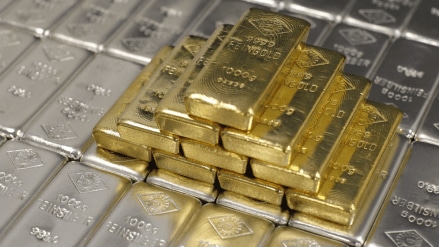The jewellery industry has been on a high ever since the Union Budget slashed the import duty on gold and silver from 15% to just 6%. However, what has surprised the industry is that the government has “forgotten” to correct the duty drawback rates, which are still at 15%.
Due to this anomaly, exporters could potentially end up earning more than the customs duty that they pay. Surendra Mehta, national secretary, Indian Bullion and Jewellers Association (IBJA), said, “We have requested the ministry to immediately align the duty drawback in line with the current reduced rate of import duty to avoid loss of revenue to the government.”
The IBJA also alerted the government through a tweet on X on Thursday.
Typically, exporters are compensated by the government at pre-determined rates for taxes paid on raw material (such as, gold and silver) through the drawback route since this leads to higher exports of value-added goods.
The Duty Entitlement Passbook (DEPB) Scheme is an export incentive scheme that allows a refund of duties paid by exporters on importing input materials. Drawback is paid in cash while DEPB benefits are paid as scrips which can be used to pay import duty.
Usually, whenever duty changes on raw material are announced, drawback rates are also changed in line with duty changes. However, the drawback notification has not been updated so far.
If the drawback is not aligned with the new duty structure, the maths would look something like this. That is, the duty drawback on gold jewellery export is Rs 704.10 per gram. However, import duty on gold at current price and exchange rate comes to only Rs 390 per gram. Similarly, the duty drawback on silver export is Rs 8,949 per kg but import duty on silver is only Rs 5,100 per kg.
The loss of revenue due to incorrect duty drawback on export after reduction in duty on gold is more than Rs 3 lakh per kg and on silver is approximately Rs 4,000 per kg.
A leading gold and diamond exporter said on the condition of anonymity that gold was imported by them at old high rate of customs duty and value addition takes time. The sharp reduction in duty has already resulted in big loss to such exporters who have already imported bullion at high import duty.
Hence, “till drawback rates are aligned with the new duty structure it’s a relief to us,” he added.
However, when exporters get more money in drawback rates compared to what they pay as import duty, many exporters started exporting jewellery with minimal value addition to get benefits of higher drawback.
In recent times, there has been increase in the round tripping of gold as well, according to an industry official. In round tripping, gold imported in bar form is exported with minimum value addition to their own dummy companies overseas or to a person acting in tandem with the exporter and same jewellery is melted and imported in India again.
